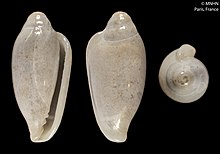미코얀구레비치 DIS
Mikoyan-Gurevich DIS| DIS | |
|---|---|
 | |
| Mikulin AM-37 엔진을 사용한 DIS-T 프로토타입 | |
| 역할 | |
| 국기원 | 소비에트 연방 |
| 제조사 | 미코얀구레비치 |
| 제1편 | 1941년 6월 11일 |
| 상태 | 취소된 |
| 숫자 빌드 | 2 |
The Mikoyan-Gurevich DIS (Russian: Дальний истребитель сопровождения/ Dalnij Istrebitel' Soprovozhdenya – "long-range escort fighter") was a prototype Soviet heavy fighter of World War II, envisioned to serve primarily in the escort fighter role.서비스 명칭 MiG-5는 항공기 생산 버전에 지정되었다.구소련의 경쟁 설계에는 그뤼신 Gr-1, 폴리카르포프 TIS, 타이로프 Ta-3 등이 포함되었다.
정찰과 폭격기 버전을 개발하기 위한 것이었지만 1941년 6월 독일의 침공 바르바로사 작전으로 인해 이 계획들은 차질을 빚었다.이 프로젝트는 실망스러운 Mikulin AM-37 엔진 때문에 실패했고 M-82 방사형 엔진으로 두 번째 시제품이 만들어졌을 때 성능이 보통 수준이었다.이 디자인은 1943년 적어도 두 개의 시제품이 만들어진 후 취소되었다.
설계 및 개발
NKAP(Narodny komissarity aviatsionnoy promyshlennosti—항공산업부)는 1940년 10월 7일 OKO(Opytno-konstrooktorski otdel)에 의뢰했다.나중에 미코얀-구레비치 설계국(OKB)이 될 공장(자보드) 1호의 실험설계부)는 AM-37 엔진을 사용하려는 쌍침형 장거리 1인승 호위 전투기에 대한 작업을 시작하여 미쿨린에 의해 개발 중에 있다.또 시방서와 함께 그해 11월 12일 협의할 수 있도록 할 것을 요청했다.사흘 후 미코얀과 구레비치는 1941년 8월 1일, 9월 1일, 11월 1일에 국가 인수 재판을 받기 위해 3개의 시제품을 제작하라는 명령을 받았다.회의 후, NKAP는 폭격, 어뢰 공격, 정찰, 교란 등으로 역할을 확대했다.[1]
A low-wing, twin-engined, twin-tailed monoplane, the DIS was of mixed construction. The front section was built from duralumin, the middle section was a wooden monocoque and the rear section was steel tubes covered with a duralumin skin. The twin tails were wooden and had an electrically operated variable-incidence horizontal stabilizer.[1] The elevators had duralumin frames, but were covered by fabric. The two-spar wing was made in three pieces. The center section was metal, but the outer panels were wooden with fabric-covered ailerons and veneer-covered Schrenk flaps. The wing had leading edge slats along two-thirds of its length. The main undercarriage retracted rearwards into the rear of the engine nacelles and the tailwheel retracted into the rear fuselage. The Mikulin AM-37 inline engines were slung underneath the wings with the engine oil coolers mounted in the outer wing panels. The air intakes for the engine superchargers were located in the wing leading edge. The pilot was provided with a glass panel on the underside of the nose to improve his downward visibility,[1] and he was protected by armor up to 9 mm (0.35 in) thick at the front, rear, sides and underside of his seat. The fuel capacity was 1,920 litres (422 imp gal; 507 US gal) in two protected tanks behind the pilot, and another four in the wings.[2]
The DIS was intended to be armed with a 23 mm (0.91 in) VYa cannon with 200 rounds in a pod beneath the nose, but the VVS preferred the Taubin MP-6 cannon. The DIS was to carry two of them with 120 rounds per gun, but they proved to be a failure and the aircraft reverted to the original VYa cannon. Each wing root was to have a synchronized 12.7 mm (0.50 in) Berezin UBS machine gun with 300 rounds mounted below a pair of 7.62 mm (0.300 in) ShKAS machine guns with 1000 rounds per gun. The gun pod could be removed and bombs up to 1,000 kg (2,200 lb) or a torpedo could be carried instead.[1]
Flight testing
The first prototype, with the internal designation of T, made its first flight on 11 June 1941. Its initial flight tests, conducted by the manufacturer between 1 July and 5 October, were a disappointment as it could reach only a speed of 560 km/h (348 mph) at 7,500 metres (24,606 ft), 104 km/h (65 mph) slower than estimated. The three-bladed 3.1-metre (10 ft) AV-5L-114 propellers were exchanged for four-bladed 3.1-metre (10 ft) AV-9B-L-149 propellers and the engine installation was redesigned, after wind tunnel tests by TsAGI (Central Aero and Hydrodynamics Institute), which revealed that the poorly designed engine accessories were the major cause of the excess drag. After modifications, the aircraft reached 610 km/h (380 mph) at an altitude of 6,800 metres (22,310 ft). Its time to 5,000 metres (16,404 ft) was 5.5 minutes. Even with the improvements the LII (Lyotno-Issledovatel'skiy Institoot—Flight Research Institute) did not recommend production, but recommended that development and testing should continue. The German advance on Moscow in October 1941 forced the Institute and the DIS to evacuate to Kazan while the OKO and its factory went to Kuibyshev. The failure of the AM-37 to enter production doomed the project, albeit temporarily.[3]
OKO는 다른 모든 항공기 설계자들과 함께 1941년 5월에 슈베초프 ASH-82 방사형 엔진을 자사 제품의 백업 엔진으로 사용하라는 지시를 받았으나, 대피로 인해 내부적으로 IT라고 알려진 이 버전의 생산이 차질을 빚었고 1942년 가을이 되어서야 제작되었다.엔진과는 별개로 작은 측면에서도 T와 차이가 있었다.테일코인은 수직으로 쪼개어 에어브레이크로 사용하였으며, 무장은 각각 150발씩의 언더노즈 포드에 2대의 VYA 대포를 장착하고 날개뿌리에 4발의 베레진 UBK 기관포로 구성하도록 수정되었다.1943년 1월 28일 첫 비행을 했으며 최고 시속 604km(375mph)의 속도와 6.3분 5,000m의 시간을 시연했다.비행시험은 2월 10일 부유식 카뷰레터를 TsIAM(Tsentrahl'ny Institute Aviatsionnovo Motorostroyenya - 중앙 항공자동차 연구소)에 보내 조정을 받아야 하는 바람에 중단되었다.이것들에 대한 지속적인 문제들이 있었고 그들은 1943년 10월에 그것이 취소될 때까지 전체 프로젝트를 연기했다.[1]
서비스 명칭 MiG-5는 1941년 10월 2일 NKAP 명령에서 입증된 바와 같이 이 항공기의 생산 버전을 위해 예약되었으며, 이는 자보드 1호가 국가 인수 시험이 완료된 후 MiG-5의 제조를 시작하도록 지시하였다.이 항공기의 다른 알려진 명칭으로는 DIS-200과 공장 명칭인 이즐리예 71이 있다.폭격기 버전은, 만약 그것이 생산에 들어갔다면, MiG-2로 알려졌을지도 모른다.[1]
두 개의 시제품이 만들어진 것으로 알려졌지만, 일부 기록에서는 다른 시제품도 제작되었다고 한다.원래 주문은 3대의 항공기를 요구했고 나중에 M-82 엔진을 장착한 2대의 추가 항공기에 대해 수정되었다.일부 출처에서는 후기 버전의 첫 비행일인 1942년 1월과 1941년 10월 15일을 인용하는데, 이는 후기 버전 중 두 편이 완성되었다는 표시일 수도 있고, 단순히 사무적인 오류일 수도 있다.[4]
변형
- DIS – 기본 명칭
- DIS-T – 각각 1,400마력의 Mikulin AM-37 인라인 엔진을 장착한 초기 프로토타입.
- DIS-IT – 각각 1,700마력의 2 × 슈벳소프 M-82F 방사형 엔진을 장착한 두 번째 시제품. 기타 미묘한 개정이 성능 향상에 추가되었다.
- MiG-5 – 생산 품질의 항공기에 대한 소련 공군의 지정(사용되지 않음)
사양(DIS-T)
OKB Mikoyan의 데이터 : 설계국 및 항공기의[1] 역사
일반적 특성
- 승무원: 1
- 길이: 11.2m(36ft 9인치)
- 날개 폭: 15.3m(50ft 2인치)
- 높이: 3.4m(11피트 2인치)
- 날개 면적: 38.9m2(419평방피트)
- 에어포일: 클라크 YH
- 공중량: 6,140kg(13,536lb)
- 총 중량: 8,060kg(17,769lb)
- 연료 용량: 1,920kg(4,230lb)
- 발전소: 2 × Mikulin AM-37 V-12 액체 냉각 피스톤 엔진, 각각 1,044 kW(1,400 hp)
- 프로펠러: 3-블레이드 정속 프로펠러
퍼포먼스
- 최대 속도: 6800m(22,300ft)에서 610km/h(380mph, 330kn)
- 범위: 2,280km(1,420mi, 1,230nmi)
- 서비스 한도: 10,900m(35,800ft)
- 상승률: 15.24m/초(3,000ft/min)
- 고도 도달 시간: 5분 30초 이내에 5,000m(16,404ft)
- 날개 하중: 207.2 kg/m2(42.4 lb/sq ft)
무장을
- 건스:
- 1 × 23 mm 볼코프-야르트세프 VYA-23 오토캐논
- 2 × 12.7 mm Berezin UB 기관총
- 4 × 7.62 mm ShKAS 기관총
비교 가능한 항공기
참조
추가 읽기
| 위키미디어 커먼즈에는 미코얀-구레비치 MiG-5(DIS-200)와 관련된 미디어가 있다. |
- Gordon, Yefim (2008). Soviet air power in World War 2. Hinckley, England: Midland. ISBN 978-1-85780-304-4.
- Gunston, Bill (1995). The Osprey Encyclopedia of Russian Aircraft 1875–1995. London: Osprey. ISBN 1-85532-405-9.
이 기사의 초기 버전은 aviation.ru의 자료를 기반으로 했다.그것은 저작권자에 의해 GFDL에 의해 공개되었다.



